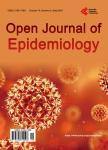Perceptions and Knowledge about Cervical Cancer among Women Living with HIV in Parakou in 2017
Perceptions and Knowledge about Cervical Cancer among Women Living with HIV in Parakou in 2017作者机构:School of Public Health and Epidemiology University of Parakou Parakou Benin Department of Pathological Anatomy Faculty of Medicine University of Parakou Parakou Benin STI Clinic (DIST) Cotonou Community Health Centre 1 Cotonou Benin Obstetrics and Gynecology Service of the Hospital and University Center of the Mother and Child of Lagune (CHUMEL) of Cotonou Cotonou Benin Laboratory of Pathological Anatomy of Cité Houéyiho Faculty of Health Sciences of Cotonou University of Abomey Calavi Godomey Benin
出 版 物:《Open Journal of Epidemiology》 (流行病学期刊(英文))
年 卷 期:2022年第12卷第1期
页 面:31-49页
学科分类:1002[医学-临床医学] 100214[医学-肿瘤学] 10[医学]
主 题:Perceptions Knowledge Cervical Cancer Benin HIV
摘 要:Background: Cervical cancer (CC) is the fourth most common cancer in women and those living with HIV have a six times higher risk of cervical cancer compared to those without. The objective of this study was to assess knowledge and perceptions about cervical cancer in women living with HIV/AIDS (WLWHIV) in the municipality of Parakou in Benin. Methods: This was an analytical cross-sectional study conducted among WLWHIV monitored on antiretrovira (ARV) therapy (ART) centers in Parakou. Study participants were selected by systematic random sampling technique. Data collection took place from September 5, 2017 to November 6, 2017. Log-binomial regression was used to identify associated factors. Results: A total of 167 women were recruited into the study. The median age was 35 years [Interquartile range: 41.50 - 30.00]. More than half of the women had no perception of the cause of CC. Only 12.6% of women believed in the preventive capacity of early screening of CC. Among women, 15.6% knew that it can be prevented, but only 9.6% had heard of HPV and 4.8% knew that HPV vaccination is an effective means of preventing CC. The factors associated with the low level of knowledge were the age at first sexual intercourse (≤24 years), the ART follow-up site (private health structure) and the fact of not having visited a maternity hospital in the last 12 months preceding the survey. Conclusion: The perceptions and knowledge about cervical cancer in the population of women living with HIV and monitored on ART in Parakou were inadequate and disproportionate to their vulnerability to this cancer. In order to avoid a double burden on these women, their ART centers must integrate cervical cancer prevention interventions into ART initiation services.



